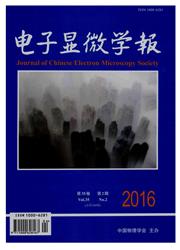

 中文摘要:
中文摘要:
以往有关小麦旗叶的研究多集中在生理生化方面,对不同时期旗叶的生理生化特性及其叶片结构动态变化的研究尚不多见.本文应用光学显微镜、透射电子显微镜、显微组织化学和紫外分光光度计等技术和方法,对高产小麦品系(小偃81)开花前后旗叶叶绿体数目与超微结构变化,以及多糖的显微定位与含量等进行了研究.结果表明:小麦旗叶叶肉细胞中的叶绿体数目、叶绿体基粒类囊片数目和垛叠数随着小麦开花期的到来逐渐增多,至开花后的灌浆期均达最高值,此后随之明显下降.与此同时,多糖与蔗糖含量等也有相似的变化趋势.我们认为:在小麦开花前后,特别是灌浆期,旗叶上述特征与小麦的光合效率及产量关系极为密切.本文的观察结果为高产小麦的选育和栽培管理提供了参考依据.
 英文摘要:
英文摘要:
There are many precious studies on wheat flag leaf, but most have focused on physiological and biochemical characteristics, few studies have examined the dynamic changes of physiological and biochemical characteristics and structure of wheat flag leaf during different stages. In this paper, sequential changes in the number of mesophyll cells and ultrastructure of chloroplasts as well as subeeUular location and contentof polysaccharide in high-yield wheat flag leaves (Xiao Yan 81 ) before and after anthesis were investigated by means of light microscopy, transmission electron microscopy, ultraviolet spectrophotometer together with histochemical analysis. The results showed that the number of cldoreplasts, the number of the thylakoid per granum and the degree of grana stacks increased steadily from anthesis stage and reached a peak at milk development stage followed by a dramatic increase. Similarly, the content of polysaccharide and sucrose reached the highest value at the milk-development stage and then decreased sharply afterwards. The results described here suggested that the ultraatructure of chloroplast characteristics and the content of polysaccharide are closely linked to the photosynthetic efficiency during different stages of wheat flag leaf development and these features can be used as an index for future breeding, providing strong theoretical evidence for field management.
 同期刊论文项目
同期刊论文项目
 同项目期刊论文
同项目期刊论文
 期刊信息
期刊信息
